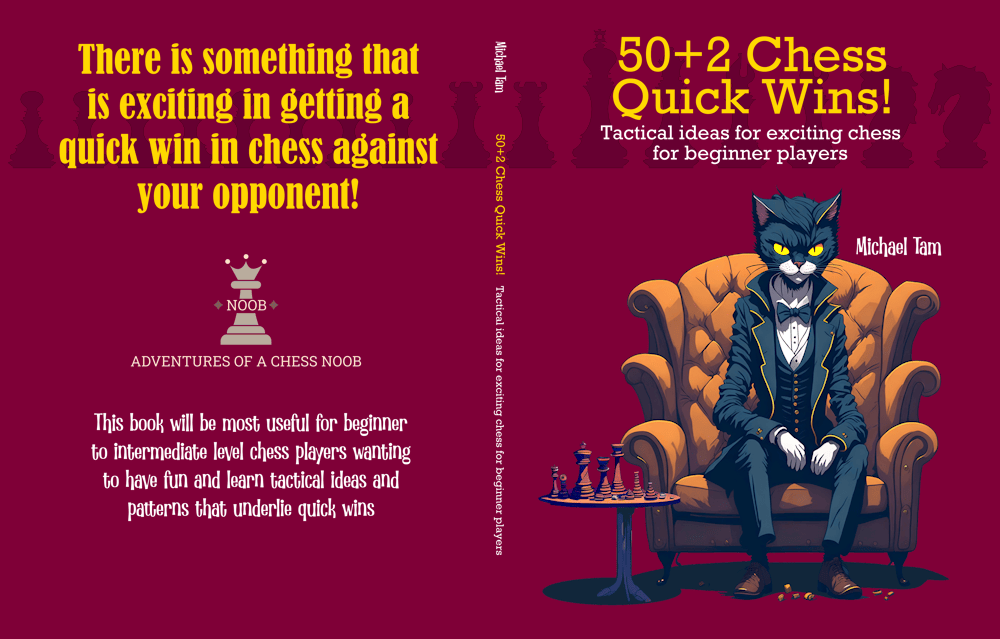
Queen Sacrifice! | AMAZING Englund Gambit Line! 🤪
#queenspawnopening #englundgambit #queensac
Now, I love the Englund Gambit and entering the Englund Complex Trap Line! In fact, in my Quick Wins series, the Englund Gambit features more than any other opening! However, there is a clear problem with the Englund Complex Trap. The modern knowledge and popularity of the gambit in online chess means that intermediate level players of the Queen's Pawn Opening will usually know how to refute it. The common attitude that you’ll see in chess social media is that the Englund Gambit is thus not playable. However, the curious thing is that the Englund Gambit and Englund Complex continues to be played by titled players in online blitz tournaments, so there is a bit of a disconnect here.
As part of the research for the book I'm writing currently on Romantic opening attacks, I explored an approach suggested by Canadian GM Aman Hambleton of the chessbrahs, where Black sacrifices their queen against the Englund Complex refutation line by White! And recently, I got to try it out for the first time in a game!
This was a daily tournament game I played for Team Australia versus Team Spain. My opponent was substantially higher rated than me with an ELO in the 1600s for rapid (I'm in the 1300s). So perhaps foolishly, I played the Englund Gambit against their Queen's Pawn Opening, and it soon became clear that they knew the refutation. We arrived at the critical position on move 7... (1. d4 e5 2. dxe5 Nc6 3. Nf3 Qe7 4. Bg5 Qb4+ 5. Nc3 Qxb2 6. Bd2! Bb4 7. Rb1!), and via a minor transposition as earlier, White played (4. Bg5), which I knew from previous analysis is Stockfish's preferred move on high depth analysis. White's moves so far are perfect!
Now, against (7. Rb1) and White's counterattack on Black's queen, Stockfish will suggest the sensible-looking move of (7... Qa3) but it's all downhill for Black as it represents a backwards retreat. White has the advantage, gains the initiative, and Black is forced into tricky defensive positions that are nonetheless losing [+2.4]. This is where the Queen Sacrifice Gambit comes in... we play the seemingly unimaginable (7... Qxc3!?) and sacrifice our queen!
At the end of the trade sequence, we force trade our queen for two minor pieces and a pawn (8. Bxc3 Bxc3+ 9. Nd2 Bxe5). Stockfish calls this move an inaccuracy, but it's not much worse on evaluation, from [+2.4 → +2.6], and we do gain some tactical compensation. As the dust clears, White has numerically 5 pieces while Black has 6. Importantly, Black retains both the bishop and knight pairs. Black's pawn structure is pristine while White has two isolated queenside pawns. Furthermore, Black retains some of the initiative and has an advantage in development. In essence, Black can continue the attack despite being down the queen!
We see this as the middlegame progresses. White presses their advantage, but my numerical piece superiority is felt. It's not so obvious that White, for instance, should trade down pieces, as in context, it has a greater impact on White’s coordination than Black’s. White sidesteps one sneaky tactic, but on move 24, is hit by a bishop absolute fork of their king and rook! For the first time in the entire game, the evaluation is now [0.00]! White's remaining rook, bishop, and queen are NOT better than my knight pair and rook pair!
White flounders against Black’s combination attack with the knights and rook and by move 33, we're notionally back to materially equality. White plays a sensible looking move, pushing their e-pawn forward, but it's a blunder [-2]! We see the potential power of the Queen Sacrifice Gambit - the better development, pawns, and numerical piece advantage can overwhelm White's retained queen. However, this position also demonstrates an important caveat, a sting in the tail. These tactical manoeuvres are tricky to find and hard to see! The winning path for Black would result in White losing much of their remaining material and enter an endgame with king and queen versus Black's rook, knight, two connected passed pawns, and a third pawn. Even though this is winning for Black, it is not simple to play!
In fact, I didn't see that correct path and the evaluation slips back to equality [0.00]. I could have pushed towards a draw, but a couple of careless blunders while playing on a device while distracted ended the game. Nonetheless, I was really pleased to have tried this for the first time. GG!
The big takeaway from this game is to consider trying this Queen Sacrifice Gambit line in the Englund Complex when White plays the refutation line. You haven’t got much to lose and it creates a really fun and dynamic game!



